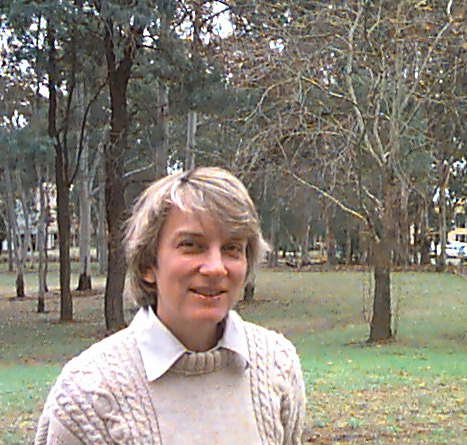Optical Microcharacterisation Facility
Director: Professor Ewa M. Goldys

The Optical Microcharacterisation Facility at Macquarie University manages a suite of novel research tools - optical microprobes – that combine state-of-the-art technologies in microscopy with versatility and diagnostic power of spectroscopy. The goal is to provide spectroscopic information on physical, chemical and biological systems on the micrometre and nanometre scale. Such characterisation can be used to resolve important problems in chemistry, forensic science, geology, biology, physics, biochemistry, physiology and materials science. Examples include the development of new tests for cancer, more effective methods for detection of low levels of water borne organisms, the design of better electronic materials and forensic identification, thin film and materials characterisation. We anticipate that this instrumentation, with its broad range of applications, will promote and develop interdisciplinary research on the boundary between physics and other sciences. For further information contact Professor Ewa M. Goldys.
Purpose of Facility
- to develop new experimental capabilities by combining, in a unique way, state-of-the-art technologies in Raman microscopy, fluorescence excitation and lifetime spectroscopy, surface enhanced Raman microscopies and imaging and Near Field Scanning microscopy;
- to use these new techniques to address problems in chemistry, biology, biochemistry, physiology and materials science;
- to develop a suite of instrumentation in a regional centre setting which will greatly facilitate interdisciplinary research across the physical and biological sciences; and
- to equip Australian scientists working in the physical, chemical and biological sciences with cutting edge infrastructure enabling them to remain at the forefront of the international research effort.
How To Use the Facility
The Facility is available to research groups in the university and also by arrangement to outside organisations. For further information contact Professor Ewa M. Goldys.
View our brochure on chemical characterisation at a microscopic level in HTML brochure or PDF brochure.
View our brochure on spectroscopic characterisation at macro and microscopic level in HTML brochure or PDF brochure .
Book our flourescence microscopes (view details below) online from here.
List of Optical Systems Accessible in the Facility
- a Leica laser scanning microscope with fluorescence lifetime imaging (FLIM), multiphoton and spectral capabilities
- a second Leica laser scaning microscope with spectral capabilities only
- a Renishaw Raman Microscope
- a Nanonics Near Field Scanning Optical Microscope and Atomic Field Microscope
- A Jobin-Yvon-Horiba microfluorescence and microfluorescence excitation system
- a Jobin-Yvon-Horiba fluorescence lifetime system
Please read on to learn more about the capabilities of these systems and the underlying techniques.
Optical characterisation techniques available in the Facility
Raman Spectroscopy and Imaging are used to reveal vital information about physical and chemical structure and state of the examined material. The relevance and strength of this generic technique is widely recognised. Selected examples of its utility include: identification of contaminants in various materials, chemical analysis of living cells. In parallel to applications in biochemistry, it can also be used as a diagnostic in biological, medical and forensic sciences. Recent advances in Raman spectrometry and the development of low-cost, high-throughput, user-friendly Raman microscopy systems have led to a renaissance of this technique across many fields. The modern systems offer non-destructive analysis of minute quantities of substances in a fraction of a second. This means that either more samples can be analysed or the method can be used in a survey mode to rapidly analyse the areas of interest. It provides a unique characterisation of samples allowing identification against standard databases. Its 1 mm spatial resolution makes possible automatic mapping of inhomogeneous samples. The UV Raman spectroscopy represents the next step change in Raman microscopy. Its advantages include: -spatial resolution below 1 micrometer and the capability of in-depth profiling, -excellent rejection of background fluorescence, -signal to noise ratio improved by a factor of up to 106 (in materials with an electronic resonance in the UV range), allowing the study of a new range of phenomena. The capabilities of Raman microscopy are greatly enhanced through the technique of Surface Enhanced Raman Spectroscopy.
An ordinary optical microscope is capable of viewing objects as small as approximately 0.5 micrometers (in the order of the wavelength of light). This is sufficient for many uses. However, different techniques need to be employed for viewing objects that are smaller than 0.5 micrometers. A range of scanning probe microscopies such as atomic force microscopy (AFM) and near field scanning probe optical microscopy (NSOM) have been developed to determine the shape and the appearance of such small objects. Near field Scanning Optical Microscopy is unique in allowing researchers to simultaneously observe optical properties and the topography of their sample with the precision of tens of nanometres (1 nanometre =10-9 m).
Introduction to Fluorescence and Fluorescence Excitation
Introduction to Fluorescence Lifetime Spectroscopy
Follow this link to learn more about our Jobin-Yvon-Horiba system
There is a new project, a Multifunctional Confocal Laser Scanning Microscope with Time Resolved and Two-photon Imaging and Fluorescnece Correlation Spectroscopy Capabilities. Book these microscopes online from here.